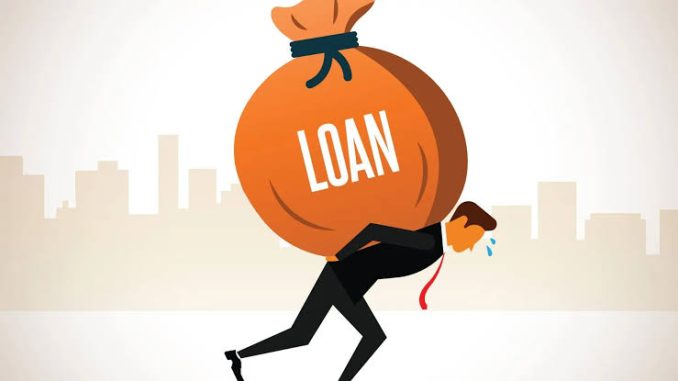
The loan and finance sector has undergone a transformative evolution in recent years, thanks to rapid technological advancements. In this comprehensive guide, we’ll delve into the latest cutting-edge technologies reshaping the loan and finance industry in 2023.
From blockchain and artificial intelligence to digital lending platforms, we’ll explore how these innovations are revolutionizing the way we borrow, invest, and manage our finances.
1 – The Blockchain Revolution in Finance
Blockchain technology has been a game-changer in the finance industry, offering enhanced security, transparency, and efficiency. In this section, we’ll explore how blockchain is revolutionizing the loan and finance sector, from secure digital identities to smart contracts and decentralized finance (DeFi) platforms.
Key Advancements in Blockchain:
- Secure Digital Identities: Blockchain enables the creation of tamper-proof digital identities, reducing fraud and streamlining identity verification processes.
- Smart Contracts: These self-executing contracts with coded rules automate various financial transactions, reducing the need for intermediaries.
- Decentralized Finance (DeFi): DeFi platforms are built on blockchain, providing decentralized lending, borrowing, and trading services.
Real-World Applications:
- We’ll discuss specific use cases of blockchain in finance, such as cross-border payments, supply chain finance, and tokenization of assets like real estate.
Challenges and Future Outlook:
- While blockchain holds enormous promise, it also faces challenges such as scalability and regulatory issues. We’ll explore these challenges and the future of blockchain in finance.
Image Placement: Include an image depicting a blockchain network, highlighting the concept of secure and transparent financial transactions.
2 – Artificial Intelligence and Machine Learning in Lending
Artificial Intelligence (AI) and Machine Learning (ML) have become integral to modern lending and finance. In this section, we’ll delve into how AI and ML technologies are reshaping lending practices, risk assessment, and customer experience.
Credit Scoring and Risk Assessment:
- AI and ML algorithms analyze vast datasets to assess creditworthiness more accurately, allowing lenders to make informed lending decisions.
- These technologies can identify patterns and predict credit risk with greater precision.
Chatbots and Virtual Assistants:
- Chatbots and virtual assistants powered by AI enhance customer interactions by providing instant responses to queries, helping customers navigate loan applications, and offering personalized recommendations.
Fraud Detection and Prevention:
- AI-driven fraud detection systems continuously monitor transactions, identifying and mitigating fraudulent activities in real-time.
Automation of Loan Processing:
- AI streamlines loan processing by automating document verification, reducing processing times, and improving overall efficiency.
Personalized Financial Advice:
- AI-driven financial advisory services provide personalized recommendations for savings, investments, and debt management.
3: The Rise of Digital Lending Platforms
Digital lending platforms have gained immense popularity in recent years, offering a convenient and efficient way to access loans. In this section, we’ll explore how these platforms are changing the landscape of borrowing and lending.
Peer-to-Peer (P2P) Lending:
- P2P lending platforms connect borrowers directly with individual investors, eliminating traditional intermediaries like banks.
- We’ll discuss the advantages of P2P lending, including potentially lower interest rates and faster loan approval.
Online Marketplaces and Crowdfunding:
- Online marketplaces and crowdfunding platforms provide alternative sources of funding for businesses and individuals.
- We’ll highlight how these platforms enable borrowers to access capital and investors to diversify their portfolios.
Digital Banks and Neobanks:
- Digital banks, often referred to as neobanks, offer fully digital banking services, including loans, savings accounts, and payment solutions.
- Explore how neobanks are disrupting the traditional banking model.
Regulatory Considerations:
- We’ll touch on the regulatory challenges and considerations associated with digital lending platforms, emphasizing the importance of consumer protection.
4 – Cybersecurity and Data Protection in Finance
As technology advances, so does the need for robust cybersecurity measures in the finance sector. In this section, we’ll explore the critical role of cybersecurity and data protection in safeguarding financial transactions and customer information.
Threat Landscape in Finance:
- Discuss the evolving threats faced by financial institutions, including cyberattacks, phishing, and data breaches.
- Highlight the potential consequences of security breaches, including financial losses and reputational damage.
Advanced Security Technologies:
- Explore the technologies and strategies employed by the finance sector to protect sensitive data, such as encryption, multi-factor authentication, and threat detection systems.
Regulatory Compliance:
- Discuss the importance of regulatory compliance, including GDPR and financial industry-specific regulations, in ensuring data security and privacy.
Cybersecurity Best Practices:
- Provide insights into best practices for individuals and organizations to enhance cybersecurity, including regular software updates, employee training, and incident response plans.
Emerging Trends in Financial Cybersecurity:
- Highlight emerging trends like AI-driven cybersecurity solutions and blockchain’s role in enhancing security.
Wow, marvelous blog format! How lengthy have you been blogging for?
you made blogging look easy. The full glance
of your web site is fantastic, as neatly as the content! You can see similar here
e-commerce